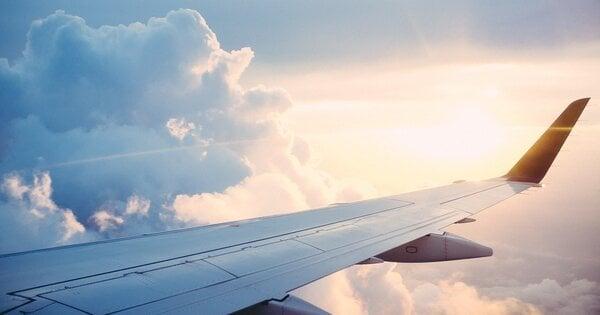Advertisement
OPINIONS
Clipped Wings: When Will Singapore Aviation Stocks Start Flying Again?
Gazing into the crystal ball...
The global pandemic has wreaked havoc on the aviation industry.
In Singapore, aviation and aviation-related stocks, such as Singapore Airlines Ltd (SGX: C6L) (SIA) and SATS Ltd (SGX: S58), have been hit badly.
Against the Straits Times Index (dark blue line shown below), year-to-date, SIA and SATS have fallen by 61% and 39%, respectively.
Source: Yahoo! Finance
Some investors could be wondering when will the local aviation sector recover. The recovery would correspondingly allow SIA's and SATS' businesses to soar once again.
No one knows for sure, but we can get some clues from what we know so far.
COVID-19 Cripples the Aviation Sector
Earlier in the year, with the coronavirus raging on, government-imposed travel restrictions and border controls around the world hit our aviation industry, hard.
Flight operations at Changi Airport were cut drastically, causing a year-on-year plunge in passenger movements of 32.8% and 70.7% in February and March 2020, respectively.
Due to the steep fall in passenger traffic and considering air travel demand is unlikely to return to pre-COVID-19 levels in the near term, terminal operations at Changi Airport were consolidated.
Terminal 2 operations were suspended from 1 May 2020 for 18 months, while Terminal 4 has been placed on standby since 16 May 2020.
The authorities also announced the postponement of the Changi Airport Terminal 5 construction for at least two years. The Changi East development, which encompasses T5, was originally slated for completion in the 2030s.
The then transport minister Khaw Boon Wan mentioned in a group session with Ministry of Transport (MOT) scholars about "great uncertainties" surrounding the future of the aviation and travel industry amid the COVID-19 pandemic.
He went on to say he was quite confident that the industry will recover, but "big questions remain".
Compared to the start of the coronavirus outbreak, though, things look to be in better control now as we understand more about the pandemic and how to manage it.
Right now, Singapore has established special travel arrangements with other countries which are coping well with the outbreak.
A reciprocal green lane with Indonesia is the latest addition. Other arrangements include the unilateral opening of borders to travellers from places like Brunei and Vietnam.
Singapore is also looking to create air travel bubbles with safe countries or regions -- an arrangement that does not require any controlled itinerary for general travellers.
In a parliamentary sitting recently, transport minister Ong Ye Kung said:
"The longer our borders remain closed, the greater the risk of losing our status as an air hub, and our attractiveness as a place to invest... The status quo is therefore not sustainable for us."
And just as I was writing this article...
MOT announced that Singapore and Hong Kong have reached an in-principal agreement to establish a bilateral air travel bubble. If all goes according to plan, it could be the world’s first two-way travel bubble.
Clues Emerging
What is clear is that there will be a recovery to the Singapore aviation sector.
It's just that we don't know when exactly that would be at this moment in time.
And people do want to travel, even if it's without any "aim".
The strong demand for cruises to nowhere gives some clues that Singaporeans are bored "staying"... well in Singapore.
Genting Cruise Lines, one of the two approved cruise lines under the cruises to nowhere initiative, said that it had received more than 6,000 bookings for its cruises in only five days.
Royal Caribbean International, the other approved company, said that the demand has "exceeded expectations".
It'll be interesting to watch how well people take to the Singapore-Hong Kong air travel bubble as that could pave ways for the aviation sector to open up further, at a measured pace.
Tale of Two Aviation Stocks
Of the two firms, SIA and SATS, the latter's business is likely to recover faster since it's more diversified, even though most of its revenue is still from aviation.
Apart from having terminal operations at Changi Airport, SATS has operations in other countries, which caters to domestic travel as well, unlike SIA.
SATS has a presence in 60 locations across 13 countries in the Asia Pacific, the UK and the Middle East, handling passengers, meals, flights and cargoes.
Speaking of cargoes, it's a sub-sector that is more resilient than general air travel, particularly due to a spike in demand from e-commerce and the likes.
Source: SATS FY2019/2020 AGM presentation
Earlier this month, DBS Group Research upgraded its rating on SATS shares from "Hold" to "Buy" as a "recovery play", citing at least one effective vaccine could be commercialised in 2021, which will trigger mass air travel recovery.
Mass recovery in air travel will undoubtedly lift SIA's business too.
But whether the airlines can continue doing well over the long run is another question.
As discussed in an earlier article, the company is operating in a price-sensitive industry, and capital is tied up to keep SIA’s fleet fresh, which, in my opinion, don't bode well for investors.
Disclaimer: This information serves as an educational piece and is not intended to be personalised investment advice. Readers should always do their own due diligence and consider their financial goals before investing in any stock. The writer may have a vested interest in the company mentioned.
Comments
477
2
ABOUT ME
Investor | Educator | Lifelong Learner
477
2
Advertisement
No comments yet.
Be the first to share your thoughts!
